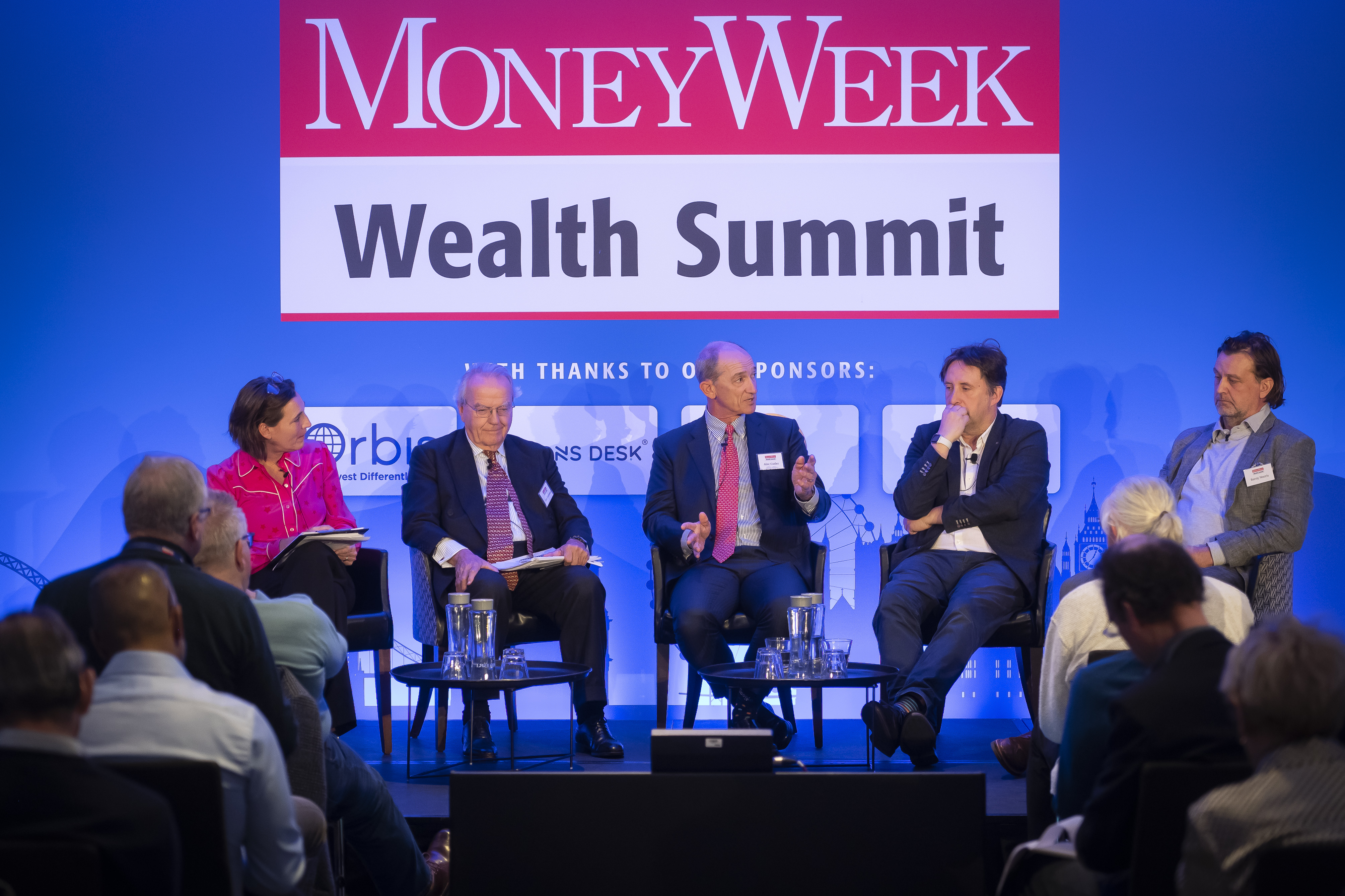How to find the market’s “multi-bagger” stocks
The success of major indices is based on a handful of spectacular performers. Dr Mike Tubbs outlines the key characteristics of shares capable of rising tenfold or more – and suggests where to start looking


All investors dream of finding stocks that rise tenfold or even 20-fold. These “ten-baggers” and “20-baggers” typically produce their spectacular gains over a period of five to 15 years. The term ten-bagger was coined by Peter Lynch, who managed the Magellan Fund from 1977 to 1990. Over this period his fund turned a $1,000 investment into $28,000.
To achieve this excellent performance, he invested in many companies whose share prices grew by between ten and 30 times – or more – during that 13-year period. Multi-baggers needn’t produce their stellar gains immediately. Lynch cites WalMart as an example of a company that went public in 1970 and went on to appreciate 30-fold after 1980.
WalMart shares rose tenfold from 1972 to 1982, then climbed from $0.38 in June 1982 to $10.80 in March 1993, an increase of 28 times in less than 11 years – or 284 times in 21 years. The shares hit $43.40 in December 1999 but only reached that level again in June 2008. The record high of $160 was in April of this year, but the shares have been selling for $130 recently.
MoneyWeek
Subscribe to MoneyWeek today and get your first six magazine issues absolutely FREE

Sign up to Money Morning
Don't miss the latest investment and personal finances news, market analysis, plus money-saving tips with our free twice-daily newsletter
Don't miss the latest investment and personal finances news, market analysis, plus money-saving tips with our free twice-daily newsletter
This price history shows that a ten-bagger can go on to increase by another ten, 20 or even 30 times. There may also come a point when the shares flatline or fall for several years or merely yield steady, unspectacular growth.
It is therefore all too easy for an investor to sell too early and miss out on a further tenfold growth spurt – or to hang on too long and lose some of the initial gains. It is important to check whether a company’s initially successful business model for profitable growth is still working.
Amazon provides another cautionary tale for those inclined to sell out after a nasty slide. The shares rose from $0.08 in June 1997 to $4.70 in December 1999 to make it a 58-bagger in under three years, but then collapsed as the dotcom bubble burst, reaching $0.36 in November 2001.
They then rose to $3.60 in mid-2007 (a ten-bagger in under six years) but powered on to a high of $186 in July 2021, a 52-fold increase in those 14 years. They are now around $115. Amazon’s business model was stronger than most dotcom companies and it both broadened its product range and entered cloud- computing via AWS (Amazon Web Services) to ensure continued profitable growth.
My best “multi-bagger” stocks
Two of my early ten-baggers were UK engineering companies Halma and Renishaw. I invested in Halma, a safety specialist with products ranging from air pollution gauges to eye-health monitors, at 112p in 2002. It became a ten-bagger in May 2017 and a 20-bagger three years later. Had I invested at the market nadir in March 2009 when Halma shares had dropped to 1,556p, they would have reached ten-bagger status by March 2019 – just a decade rather than the 14-15 years it took for me.
That highlights two more key points: the advantage of investing at a stockmarket low and the importance of sitting tight when there is an economic crisis as opposed to a problem with the company itself. I invested in Renishaw, which makes high-precision measuring and calibration equipment, at 344p in mid-2002. The shares reached 3,440p (a ten-bagger) in May 2017 and 16-bagger status in January 2018. Again, had I invested in Renishaw at 258p in March 2009 at the time of the financial crisis, it would have become a ten-bagger in just under six years, by February 2015.
An additional fillip from dividends
Halma also illustrates the substantial income that can be derived from a more mature multi-bagger. Halma has a 43-year record of raising its dividend by 5% or more every year. However, since the share price has also risen, the yield for those buying today is only 0.9% at the recent price of 2,144p. But those who bought Halma at 112p in 2002, as I did, received a 2022 dividend of 18.88p per share. That translates to a yield of 16.9% on their original investment.
Several US technology stocks have become multi-baggers. One example is Alphabet (Google’s parent company), which rose tenfold between December 2008 and January 2020, and then powered on to become a 20-bagger by October 2021. Another is Salesforce, the market leader in software for customer-relationship management. It had become a 20-bagger by January 2018 and a 30-bagger in January 2020.
A third US example is Intuitive Surgical, the leading robotic-surgery company, whose shares rose 18-fold between March 2009 and September 2018. McDonald’s, meanwhile, is an excellent example of a US dividend-paying stock that became a 16-bagger in the 16 years to 2019. The annual dividend is now $5.52, implying a 43% yield on a 2003 investment.
The odds are better in Britain
A study by Schroders of the decade to the end of December 2021 revealed, surprisingly, that UK stocks had a higher chance than their US counterparts of becoming ten-baggers over the last decade. Taking only stocks with a market value over £150m, there were 63 out of 915 UK stocks (6.9%) that became ten-baggers compared with 257 out of 4,515 US stocks (5.7%). UK examples included the retailer JD Sports, Ocado, analytics business YouGov, industrial equipment-hire firm Ashtead, Halma and Rentokil.
The fact that only 6% or 7% of stocks become ten-baggers or better explains the observation that most of the growth in market indices such as the S&P500 or Nasdaq can be explained by the outperformance of a small number of stocks. The Schroder study found that expanding profit margins and sales growth were the largest drivers of shareholder returns – useful indicators for investors eyeing up potential multi-bagging stocks.
The key attributes of multi-bagger stocks
These high-flying companies tend to display some or all of the following characteristics. One is a so-called “wide moat”: something that provides a sustainable competitive advantage to defend it against potential rivals seeking to enter the market.
Without a moat, a growing, profitable market will attract other companies offering very similar products or services, and this added competition will drive down margins and slow the growth of the first entrant.
Moats can be based on innovative and patented new products that satisfy important customer needs; recognisable and trusted brands; or a cost advantage from favoured access to low-cost materials or from economies of scale.
Another possibility is switching costs: would customers incur a lot of cost and hassle in changing to a competitor? Finally, government regulatory approvals can also comprise a moat. We will look at examples of these five types of moat.
Renishaw, the precision-metrology company, is an excellent example of a company whose moat is based on innovative and patented new products. It has long invested twice the proportion of sales into research and development (R&D) typical of its sector (electronic and electrical engineering).
This R&D is focused on patentable inventions used to come up with a stream of new and improved metrology products that are essential for its manufacturing customers in a wide range of industries.
The power of top brands
Diageo is a good example of the power of a company with highly recognisable brands such as Johnnie Walker and Lagavulin whisky, Gordon’s gin, Captain Morgan rum, Guinness and many others. Customers will pay extra for top-notch labels.
Alphabet boasts a very recognisable brand (Google) with a dominant market share of online advertising. Coca-Cola’s wide moat is based on both a cost advantage, which it achieves through sheer scale, and a highly recognisable brand stemming from a proprietary formulation of the soft drink.
I remember years ago buying quarry floor tiles from a UK family company whose cost advantage was a source of low-cost materials: they owned their own quarry with high-quality clay that made excellent crack-resistant floor tiles.
Salesforce’s moat is based on switching costs as well as innovative products. Salesforce started with customer-relationship management software in 2000 and was the first company to deliver its software conveniently over the internet and charge a subscription.
Software as a service, or SaaS, was an innovation. Salesforce offers a wide array of different SaaS software products, and customers would find it both costly and onerous to change supplier. Indeed, there here is no point in doing so as Salesforce has a wide range of excellent offerings.
Government regulations on safety provide a moat for pharmaceutical and medical device companies since a new drug, for instance, has to go through three stages of clinical trials and an approval process before gaining marketing authorisation. This regulatory approval process, coupled with patents, provides wide moats for novel drugs and medical devices.
In addition to a wide moat, ten-baggers often boast innovative new products and a strong position in a growth market, with sufficient finance to enable the company to expand quickly. Renishaw is again a good example with its innovative, patented products yielding a healthy profit stream, enabling the firm to invest in R&D and expansion while maintaining a cash balance and paying dividends.
What can go wrong
These stellar stocks sometimes come unstuck. Several companies have reached ten-bagger status but then run into problems that cause the share price to fall sharply or stop rising. This can sometimes be due to a major problem with a product, as happened with Boeing. The shares rose from a low of $33.40 in March 2009 to achieve ten-bagger status in January 2018; they then reached a high of $440.60 in February 2019, just before the second 737 Max crash in March 2019. Add in the Covid-19 pandemic and associated drop in air travel and the shares fell 78% to $95 in March 2020.
Questions about a company’s accounts – whether ultimately validated or not – can also be a large setback. Burford Capital, the world’s largest commercial litigation-funding specialist, became a ten-bagger in just over three years and a 20-bagger in six. But in August 2019 it became a target of the US short-seller Muddy Waters, which queried Burford’s accounting practices – in particular, the valuation of ongoing cases. Burford’s shares fell from 1,600p in July 2019 to 700p a month later and 313p in March 2020. The company has defended its accounting and its shares have recovered to 900p now, but remain still some way below their highs.
Changes in a growth market can also undermine investors’ expectations. Fever-Tree Drinks saw growing sales of its novel mixer drinks propel the share price from 175p in December 2014 to 3,863p in September 2018 to make it a 22-bagger in under four years. But fears about flattening demand for its pricey mixers caused the share price to drop back to 2,149p in December 2018 and 935p in March 2020. The shares are now around 920p, having fallen this year on fears of cost increases eating into margins.
Overall, key warning signs to look for in a potential or actual ten-bagger include: weakness in the company’s moat (including the threat of disruptive technology); weakness in sales growth and/or margins; accounting irregularities; problems with a major product; and a large or unrelated acquisition. In a worst-case scenario, one must be alert for outright fraud. US energy firm Enron was a high flier, rising from a single-digit share price in the late 1980s to a high of $91 in mid-2000, but then tumbled to less than $1 by November 2001 as it became clear that management was cooking the books. The company filed for bankruptcy in December 2001.
Benefiting from bolt-on acquisitions
Big or unrelated purchases can be warning signs for a multi-bagger or a company that might become one. However, a number of multi-baggers have used bolt-on acquisitions to enhance their technology or market position or build a new and related division.
One example is Halma, the 20-bagger. Halma acquires related companies that have global niches in markets with long-term growth drivers. It has acquired more than 50 companies and disposed of several others whose growth had slackened.
Another UK example is Judges Scientific, which has put together a portfolio of scientific and testing-instrument companies. The shares rose from 64p in February 2009 to 2,375p in March 2014 to make it a 37-bagger in five years. The shares then fell and only reached 2,375p again in April 2018, before rising almost another four times to a high of 8,640p in October 2021.
Multi-baggers are fairly rare, as the Schroder’s study shows: among companies with a market capitalisation of more than £150m, 7% of UK stocks and 6% of US stocks fit the bill. That’s why Peter Lynch’s Magellan portfolio contained up to 1,400 stocks, so he could be confident of having a good number of multi-baggers. That’s far too many stocks for a private investor but you do need a portfolio of a reasonable size to raise your chances of having a few really successful ones.
To boost your odds further, look for companies with a wide moat, innovative technology or products, a strong position in a growth market, and sufficient finance and cash flow to maintain high growth. Signs that these conditions are being met include strong sales growth and high and increasing margins.
It is sometimes possible to identify a multi-bagger because it is following a similar business model to a previously successful one. For example, SDI is a digital-imaging, sensors and controls specialist with some similarities to Judges Scientific, the 37-bagger highlighted earlier.
Both companies have made a number of bolt-on acquisitions. SDI’s shares rose from 9p in September 2015 to 215p in November 2021, making it a 24-bagger in six years. SDI was my tip of the year in December 2020 at 104p; it had more than doubled to 217p by November 2021. Had I spotted it in March 2020 at 40p, the gain would have been more than five times.
What to look for now
I am not going to give hostages to fortune by listing potential multi-baggers. But you should select companies that are already showing sales growth with good margins thanks to a sustainable business model. Make sure you understand why the company has a wide moat; check that it has a strong position in a growing market and generates sufficient cash to be able to continue its high growth rate.
Monitor its results, news and trading updates carefully for any signs that may indicate a change in its successful formula, such as slackening sales growth or shrinking margins. But do not be misled by a company’s share price falling owing to a general retreat in share prices.
The financial crisis of 2008-2009 provided an excellent buying opportunity for shares in potential multi-baggers. And if you hold one that has matured to a steady growth stage but pays increasing dividends, consider hanging onto it for the double-digit yield it gives on your original investment. Happy hunting.
Get the latest financial news, insights and expert analysis from our award-winning MoneyWeek team, to help you understand what really matters when it comes to your finances.
Highly qualified (BSc PhD CPhys FInstP MIoD) expert in R&D management, business improvement and investment analysis, Dr Mike Tubbs worked for decades on the 'inside' of corporate giants such as Xerox, Battelle and Lucas. Working in the research and development departments, he learnt what became the key to his investing; knowledge which gave him a unique perspective on the stock markets.
Dr Tubbs went on to create the R&D Scorecard which was presented annually to the Department of Trade & Industry and the European Commission. It was a guide for European businesses on how to improve prospects using correctly applied research and development.
He has been a contributor to MoneyWeek for many years, with a particular focus on R&D-driven growth companies.
-
 ‘Why I have ditched my Help to Buy ISA for cash savings and the stock market’
‘Why I have ditched my Help to Buy ISA for cash savings and the stock market’Without the 25% bonus, my Help to Buy ISA is effectively redundant, says MoneyWeek writer Sam Walker.
-
 Is your inheritance tax allowance cut if you sell to downsize or sell your home to pay for care?
Is your inheritance tax allowance cut if you sell to downsize or sell your home to pay for care?Downsizing relief is a little-known benefit that could save your loved ones tens of thousands of pounds in inheritance tax after you’ve died.
-
 Halifax: House price slump continues as prices slide for the sixth consecutive month
Halifax: House price slump continues as prices slide for the sixth consecutive monthUK house prices fell again in September as buyers returned, but the slowdown was not as fast as anticipated, latest Halifax data shows. Where are house prices falling the most?
-
 Rents hit a record high - but is the opportunity for buy-to-let investors still strong?
Rents hit a record high - but is the opportunity for buy-to-let investors still strong?UK rent prices have hit a record high with the average hitting over £1,200 a month says Rightmove. Are there still opportunities in buy-to-let?
-
 Pension savers turn to gold investments
Pension savers turn to gold investmentsInvestors are racing to buy gold to protect their pensions from a stock market correction and high inflation, experts say
-
 Where to find the best returns from student accommodation
Where to find the best returns from student accommodationStudent accommodation can be a lucrative investment if you know where to look.
-
 The world’s best bargain stocks
The world’s best bargain stocksSearching for bargain stocks with Alec Cutler of the Orbis Global Balanced Fund, who tells Andrew Van Sickle which sectors are being overlooked.
-
 Revealed: the cheapest cities to own a home in Britain
Revealed: the cheapest cities to own a home in BritainNew research reveals the cheapest cities to own a home, taking account of mortgage payments, utility bills and council tax
-
 UK recession: How to protect your portfolio
UK recession: How to protect your portfolioAs the UK recession is confirmed, we look at ways to protect your wealth.
-
 Buy-to-let returns fall 59% amid higher mortgage rates
Buy-to-let returns fall 59% amid higher mortgage ratesBuy-to-let returns are slumping as the cost of borrowing spirals.
